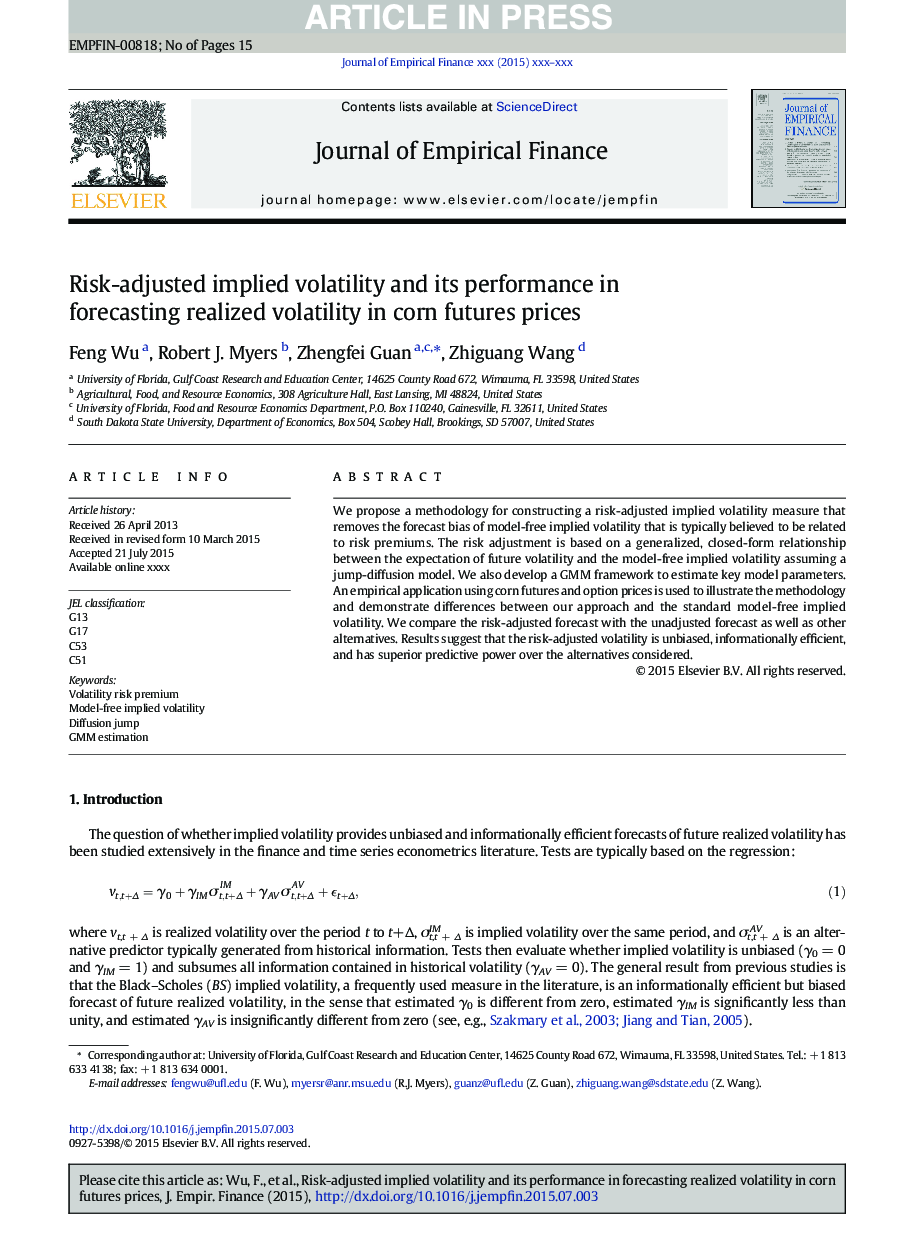| Article ID | Journal | Published Year | Pages | File Type |
|---|---|---|---|---|
| 7360801 | Journal of Empirical Finance | 2015 | 15 Pages |
Abstract
We propose a methodology for constructing a risk-adjusted implied volatility measure that removes the forecast bias of model-free implied volatility that is typically believed to be related to risk premiums. The risk adjustment is based on a generalized, closed-form relationship between the expectation of future volatility and the model-free implied volatility assuming a jump-diffusion model. We also develop a GMM framework to estimate key model parameters. An empirical application using corn futures and option prices is used to illustrate the methodology and demonstrate differences between our approach and the standard model-free implied volatility. We compare the risk-adjusted forecast with the unadjusted forecast as well as other alternatives. Results suggest that the risk-adjusted volatility is unbiased, informationally efficient, and has superior predictive power over the alternatives considered.
Related Topics
Social Sciences and Humanities
Economics, Econometrics and Finance
Economics and Econometrics
Authors
Feng Wu, Robert J. Myers, Zhengfei Guan, Zhiguang Wang,
